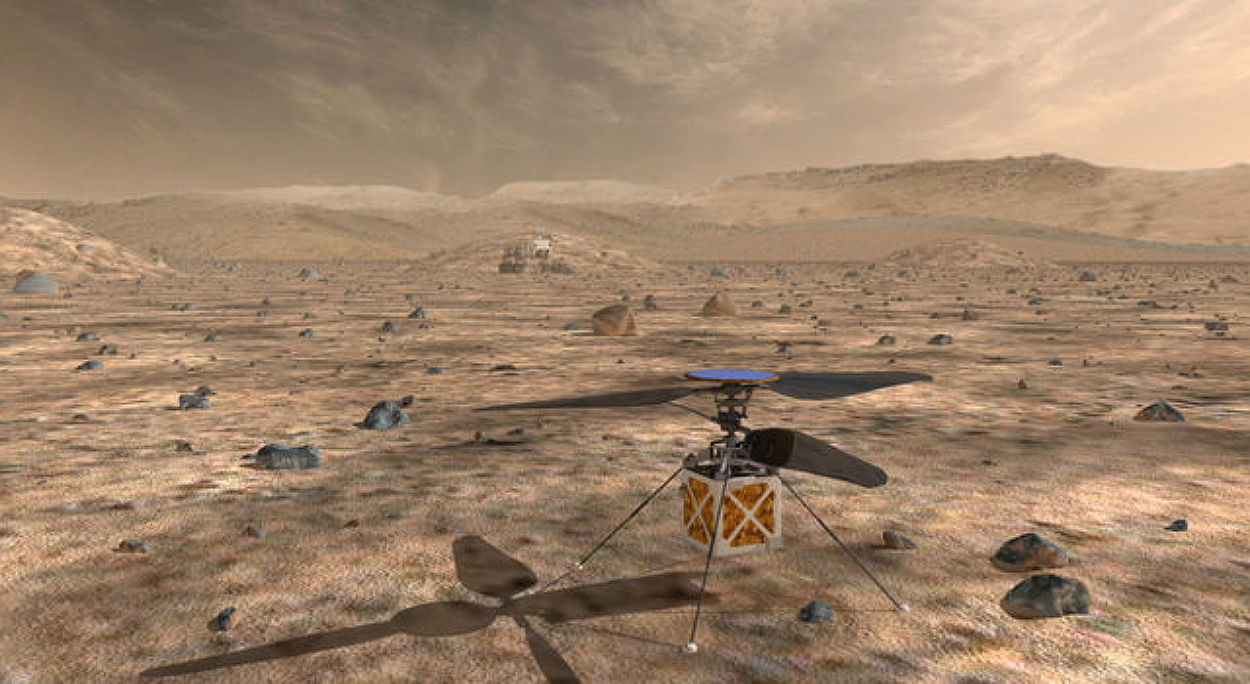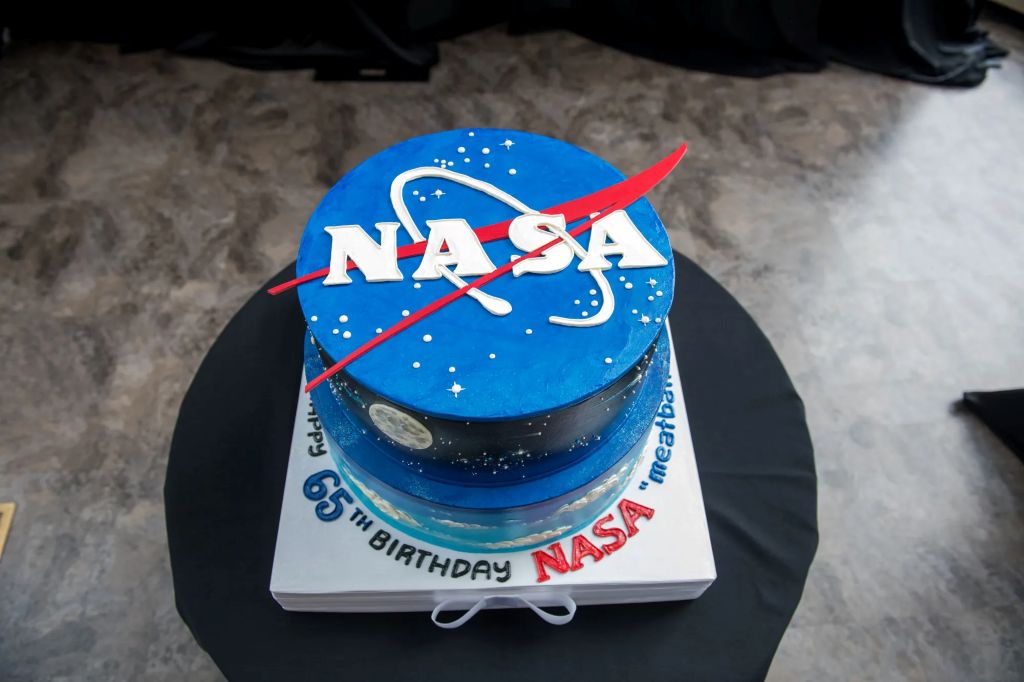NASA’s DART Mission Sheds New Light on Target Binary Asteroid System


The various geological features observed on Didymos helped researchers tell the story of Didymos’ origins. The asteroid’s triangular ridge (first panel from left), and the so-called smooth region, and its likely older, rougher “highland” region (second panel from left) can be explained through a combination of slope processes controlled by elevation (third panel from left). The fourth panel shows the effects of spin-up disruption that Didymos likely underwent to form Dimorphos.
Credit: Johns Hopkins APL/Olivier Barnouin
In studying data collected from NASA’s DART (Double Asteroid Redirection Test) mission, which in 2022 sent a spacecraft to intentionally collide with the asteroid moonlet Dimorphos, the mission’s science team has discovered new information on the origins of the target binary asteroid system and why the DART spacecraft was so effective in shifting Dimorphos’ orbit.
In five recently published papers in Nature Communications, the team explored the geology of the binary asteroid system, comprising moonlet Dimorphos and parent asteroid Didymos, to characterize its origin and evolution and constrain its physical characteristics.
“These findings give us new insights into the ways that asteroids can change over time,” said Thomas Statler, lead scientist for Solar System Small Bodies at NASA Headquarters in Washington. “This is important not just for understanding the near-Earth objects that are the focus of planetary defense, but also for our ability to read the history of our Solar System from these remnants of planet formation. This is just part of the wealth of new knowledge we’ve gained from DART.”
Olivier Barnouin and Ronald-Louis Ballouz of Johns Hopkins Applied Physics Laboratory (APL) in Laurel, Maryland, led a paper that analyzed the geology of both asteroids and drew conclusions about their surface materials and interior properties. From images captured by DART and its accompanying LICIACube cubesat – contributed by the Italian Space Agency (ASI), the team observed the smaller asteroid Dimorphos’ topography, which featured boulders of varying sizes. In comparison, the larger asteroid Didymos was smoother at lower elevations, though rocky at higher elevations, with more craters than Dimorphos. The authors inferred that Dimorphos likely spun off from Didymos in a large mass shedding event.
There are natural processes that can accelerate the spins of small asteroids, and there is growing evidence that these processes may be responsible for re-shaping these bodies or even forcing material to be spun off their surfaces.
Analysis suggested that both Didymos and Dimorphos have weak surface characteristics, which led the team to posit that Didymos has a surface age 40–130 times older than Dimorphos, with the former estimated to be 12.5 million years and the latter less than 300,000 years old. The low surface strength of Dimorphos likely contributed to DART’s significant impact on its orbit.
“The images and data that DART collected at the Didymos system provided a unique opportunity for a close-up geological look of a near-Earth asteroid binary system,” said Barnouin. “From these images alone, we were able to infer a great deal of information on geophysical properties of both Didymos and Dimorphos and expand our understanding on the formation of these two asteroids. We also better understand why DART was so effective in moving Dimorphos.”
Based on the internal and surface properties described in Barnouin et al. (2024), this video demonstrates how the spin-up of asteroid Didymos could have led to the growth of its equatorial ridge and the formation of the smaller asteroid Dimorphos, seen orbiting the former near the end of the clip. Particles are colored according to their speeds, with the scale shown at the top, along with the continually changing spin period of Didymos.
Credit: University of Michigan/Yun Zhang and Johns Hopkins APL/Olivier Barnouin
Maurizio Pajola, of the National Institute for Astrophysics (INAF) in Rome, and co-authors led a paper comparing the shapes and sizes of the various boulders and their distribution patterns on the two asteroids’ surfaces. They determined the physical characteristics of Dimorphos indicate it formed in stages, likely of material inherited from its parent asteroid Didymos. That conclusion reinforces the prevailing theory that some binary asteroid systems arise from shed remnants of a larger primary asteroid accumulating into a new asteroid moonlet.
Alice Lucchetti, also of INAF, and colleagues found that thermal fatigue — the gradual weakening and cracking of a material caused by heat — could rapidly break up boulders on the surface of Dimorphos, generating surface lines and altering the physical characteristics of this type of asteroid more quickly than previously thought. The DART mission was likely the first observation of such a phenomenon on this type of asteroid.
Supervised by researcher Naomi Murdoch of ISAE-SUPAERO in Toulouse, France, and colleagues, a paper led by students Jeanne Bigot and Pauline Lombardo determined Didymos’ bearing capacity — the surface’s ability to support applied loads — to be at least 1,000 times lower than that of dry sand on Earth or lunar soil. This is considered an important parameter for understanding and predicting the response of a surface, including for the purposes of displacing an asteroid.
Colas Robin, also of ISAE-SUPAERO, and co-authors analyzed the surface boulders on Dimorphos, comparing them with those on other rubble pile asteroids, including Itokawa, Ryugu and Bennu. The researchers found the boulders shared similar characteristics, suggesting all these types of asteroids formed and evolved in a similar fashion. The team also noted that the elongated nature of the boulders around the DART impact site implies that they were likely formed through impact processing.
These latest findings form a more robust overview of the origins of the Didymos system and add to the understanding of how such planetary bodies were formed. As ESA’s (European Space Agency) Hera mission prepares to revisit DART’s collision site in 2026 to further analyze the aftermath of the first-ever planetary defense test, this research provides a series of tests for what Hera will find and contributes to current and future exploration missions while bolstering planetary defense capabilities.
Johns Hopkins APL managed the DART mission for NASA’s Planetary Defense Coordination Office as a project of the agency’s Planetary Missions Program Office. NASA provided support for the mission from several centers, including the Jet Propulsion Laboratory in Southern California, Goddard Space Flight Center in Greenbelt, Maryland, Johnson Space Center in Houston, Glenn Research Center in Cleveland, and Langley Research Center in Hampton, Virginia.
For more information about the DART mission:
https://science.nasa.gov/planetary-defense-dart





